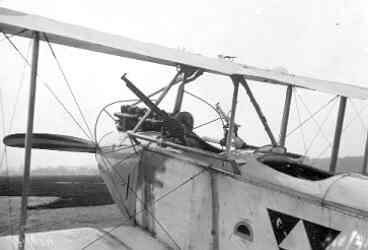History
The Aviatik C.I was (on the German side) the first two-seat armed aircraft entering operational service. Typical for this type was the heart-shaped elevator.
The Aviatik C.IA was, as often occurred, the observer placed in front of the pilot. It will be evident that the observer was hampered by all tension wires and supports.
In the Aviatik C.IB the pilot and observer had changed places and observer sat behind the pilot, a configuration that was more usual.
Replacing the interim solution C.I, Aviatik C.II was introduced in 1915 with a more powerful engine and the Aviatik C.III was developed.
Aviatik C. III was introduced in 1916 to meet the demand for better performance. The device was actually an improved Aviatik C.I
There were mainly changes regarding the streamline, the exhausts were changed and there was a big spinner of the propeller mounted. Furthermore, the radiator concealed in the wing surface.
This resulted in significantly better performance and improved forward visibility.
In 1916 came the Aviatik C.V equipped with an Argus of 180 hp. Later the Aviatik C.VI was released, which actually was a DFW C.V license.
In 1917, the Aviatik C.VIII was developed, equipped with the 160 hp Mercedes D.II. In 1918 followed the Aviatik C.IX with a 200 hp Benz.
| Dimensions: | |||
| Length | 8,08 m | Wingspan: | 11,8 m |
| Height: | 3,25 m | Wing area: | 35 m2 |
| Weights: | |||
| Empty weight: | 390 kg | Max. start weight | 1340 kg |
| Performance: | |||
| Max. speed: | 160 km/u | Climbing speed: | 240 m/min |
| Range: | 420 km | Service ceiling: | 6000 m |
| Miscellaneous | |||
| Engine type: | One Mercedes D-III rated 160 pk | ||
| Crew: | Two men | ||
| Armament: | Two machine-guns | ||
On October 11, 1916 an Aviatik C.III landed in the Netherlands and was in use as LA36. During 1918 the registration changed to AV404. On February 28, 1919 the aircraft fell into the Rhine, due to bad weather.

[Enclosed photo from BeeldBank NIMH. Click on photo for ordering information]

[Enclosed photo from BeeldBank NIMH. Click on photo for ordering information]

[Enclosed photo from BeeldBank NIMH. Click on photo for ordering information]
| Serial | Werknr. | Bestellnr. | Date in service | Date out of service | Notes |
|---|---|---|---|---|---|
| LA36 | 1753/16 | 11-10-1916 | 28-02-1919 |
1/72nd Scale
Kits
- Ardpol Models
- Kit 72-031:
- Lüdemann
- LR037: A resin kit
Modelling add-on
- --
- Set --: --
Decals
- --
- Set --: --
1/48th Scale
Kits
- -
- Kit -: -.
Modelling add-on
- --
- Set --: --
Decals
- --
- Set --: --
The fuselage: overall wood with varnish (Humbrol colour as indication); Wings (and linen parts) cellite. Metal parts were painted in a colour like light chocolat.
| Scheme | Colour name | FS number | Humbrol | XtraColor | Vallejo Model Color | Vallejo Model Air | |
|---|---|---|---|---|---|---|---|
| Standard #1 | Fuselage | Wood | 100 | ||||
| Wings | Cellite | ~3531 | 121 | X105 | |||
| Metals parts, struts, etc. | Chocolat | 94 | |||||
Check www.paint4models.com for an extensive conversion table with lots of colour and paint systems.
Literature.
| Van Brik tot Starfighter | H. Hooftman | 1965 | La Rivière en Voorhoeve - Zwolle | |
| Nederlandse Militaire Luchtvaart in Beeld., deel 1. | Hugo Hooftman | pag. 33 - 35 | 1977 | Europese Bibliotheek, Zaltbommel |
| KLu Vliegtuigen | W. Schoenmaker/Th. Postma | pag. 13 | Uitgave: De Alk Alkmaar | 1987 |
| Camouflage en Kentekens | J.Greuter e.a. | 1997 | Bonneville – Bergen (NH) | |
| Air Enthusiast no.80, The Historical Aviation Journal: Unexpected Windfalls | Bart van der Klaauw | pag. 54 - 59 | 1999 | Key Publishing, Stamford |
Websites.